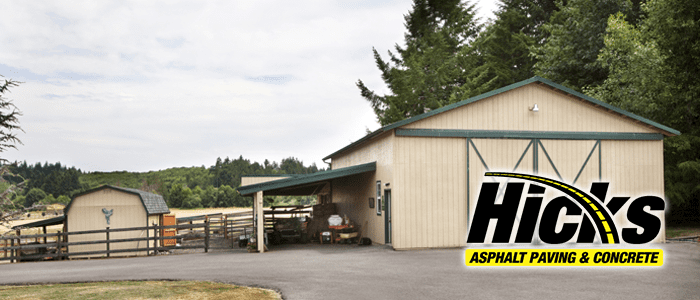Oftentimes, people will use the word cement when they mean concrete or refer to a patch of cement as concrete. They may even refer to mortar as cement. When working with professionals or planning a paving project, it is vital to know the difference. Cement is as a part of concrete. However, cement is also in mortar, stucco, grout, and sometimes adhesive. Essentially, cement is never alone. Asking about the difference between concrete and cement is like asking what the difference is between ketchup and tomatoes.
Cement
Cement is the binding agent in many industrial paving materials, as discussed. The components of cement include limestone, clay, silica, and shells. When crushed and mixed with iron ore, the materials are heated and ground into a powder for use in its various applications. The powder is remarkably fine – A pound of cement contains over a hundred billion grains. Professionals often call cement ‘Portland Cement’ because is looks like the quarry stone from the island of Portland in England.
You will also see cement – Especially Portland cement, the most commonly used cement – referred to as hydraulic cement. This means it hardens when mixed with water. While there are other forms of cement, Portland cement is the most common one. As a result, people often use the terms ‘cement’ and ‘Portland cement’ interchangeably. If you’re making concrete, you’ll likely be using Portland cement.
Concrete
Concrete is a mixture of cement and water, which forms a paste. This paste forms about 35% of concrete, but the rest is aggregates of sand, gravel, or crushed stone. As the cement mixes with water, they harden and bind the aggregates into concrete. Concrete has uniquely flexible properties and presents extraordinary strength when it is dry.
Concrete is one of the most common building materials because of its versatility, ease of use, and relatively cheap manufacturing cost. There are a variety of aggregates that are easy to use as well. Even broken concrete slabs can be ground up and used as recycled aggregate in future concrete mixtures.
More commonly, silicon dioxide quartz sand is in brick manufacture, landscaping, and agriculture. You can use various sands, such as sharp sand, under a millimeter in grain size. Gravel is also common.
Natural gravel is common in decorative concrete in roads. Sand aggregate is relevant in road construction as well, but can also be used in sanitation applications. Recycled concrete comes from demolition sites, industrial surplus. It has a high rate of compaction, which helps it form a hard surface.
Mortar
Aside from concrete, there is also mortar. Mortar is a combination of cement and sand. Lime helps to increase durability. Adding water to the mix helps it behave like concrete, but the lack of aggregate means it isn’t as strong as concrete. It is instead used as “glue” to hold bricks and slabs of concrete together and other building components such as cinderblock. Grout can be considered a type of mortar made without the limestone component. It is typically used to fill gaps rather than being used as a primary building material.
In Conclusion
Cement is just one part of the paving process. It is a material made up of several finer ingredients mixed with water and other materials to form concrete, mortar, grout, and more. When you are looking to pave a surface with that familiar, hard, gray material, you aren’t looking to purchase cement – you’re looking to make and use concrete.





